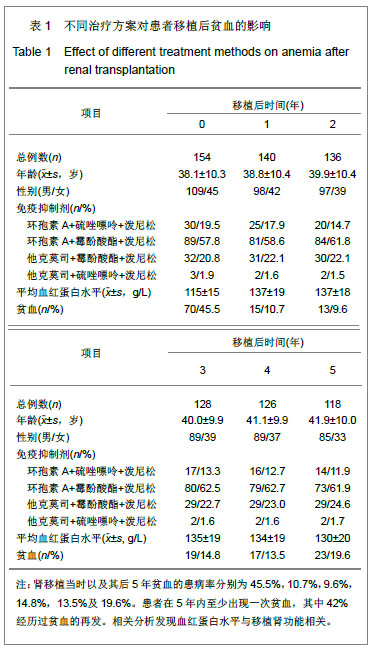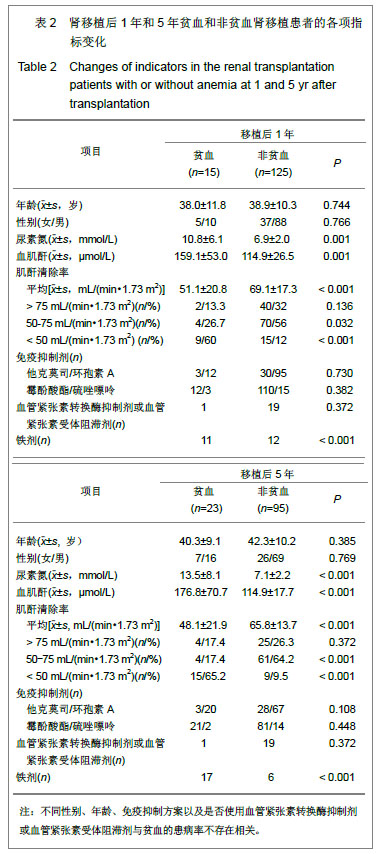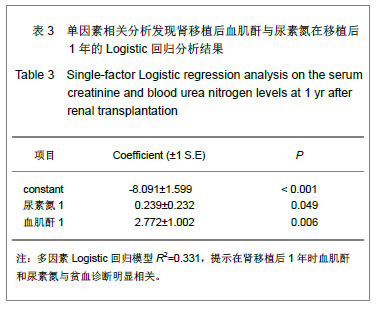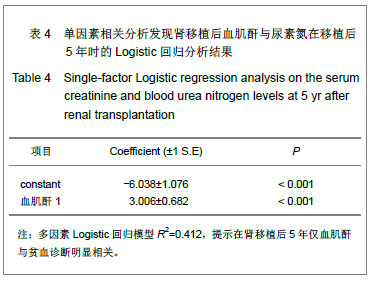中国组织工程研究 ›› 2013, Vol. 17 ›› Issue (44): 7698-7702.doi: 10.3969/j.issn.2095-4344.2013.44.007
• 肾移植 kidney transplantation • 上一篇 下一篇
肾移植后贫血154例5年随访
郭君其1,王 波1,谭建明1,俞 波2,吴卫真2,杨顺良2
- 1福建医科大学福总临床学院,福建省福州市 350025;2解放军南京军区福州总医院,福建省福州市 350025
Anemia in patients after renal transplantation: Five-year follow-up in 154 cases
Guo Jun-qi1, Wang Bo1, Tan Jian-ming1, Yu Bo2, Wu Wei-zhen2, Yang Shun-liang2
- 1Fuzhou General Clinical Medical College of Fujian Medical University, Fuzhou 350025, Fujian Province, China; 2Fuzhou General Hospital of Nanjing Military Command, Fuzhou 350025, Fujian Province, China
摘要:
背景:最近研究表明,肾移植后贫血是移植后心血管疾病的重要危险因素,并且是患者死亡的独立预测指标。
目的:探讨肾移植受者移植后贫血的患病率、处理方案以及危险因素。
方法:回顾性分析154例在解放军南京军区福州总医院泌尿外科随访的尸体肾移植受者病例资料。采集入选患者在肾移植住院期间以及移植后1,2,3,4,5年的血常规、血生化检查结果并进行分析。
结果与结论:患者肾移植当时以及其后5年贫血的患病率分别为45.5%,10.7%,9.6%,14.8%,13.5%及19.6%。患者在5年内至少出现一次贫血,其中42%经历过贫血的再发。相关分析发现血红蛋白水平与移植肾功能相关。不同性别、年龄、免疫抑制方案以及是否使用血管紧张素转换酶抑制剂或血管紧张素受体阻滞剂与贫血的患病率不存在相关性。二元Logistic回归分析显示移植后1年血肌酐、尿素氮与贫血诊断相关,而移植后5年时仅与血肌酐相关。尽管铁剂药物使用比较普遍,但促红细胞生成素在移植肾功能不全的贫血患者中却很少应用。提示肾移植后贫血患病率较高,移植肾功能不全是其发病的主要危险因素。
中图分类号:



